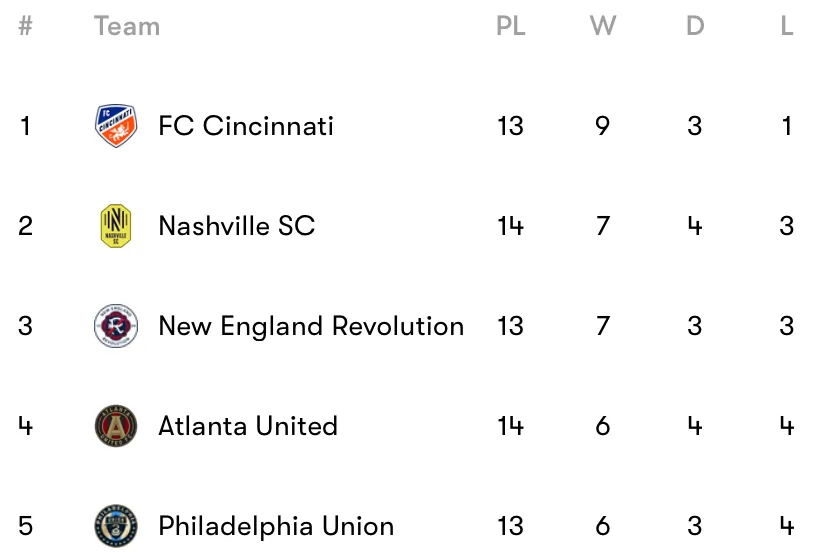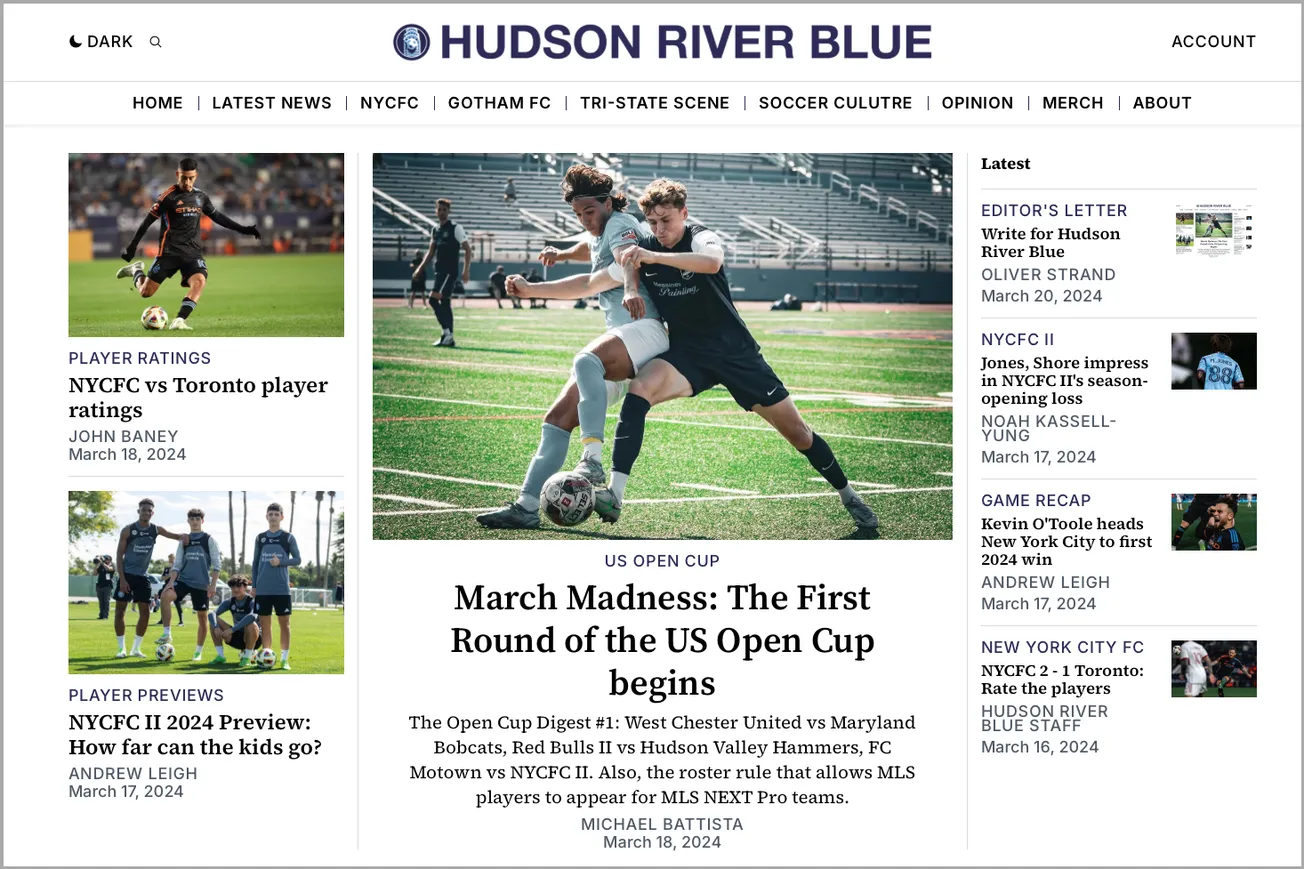Dear Reader,
When I took over running Hudson River Blue in November 2021, I standardized the records that we post in these pages to W-D-L, or wins, draws, and losses. That brought HRB into alignment with essentially every soccerball league and media organization on the planet. Overwhelmingly, the world use wins, draws, and losses, in that order.
It also put us in direct opposition to MLS, which uses the format of W-L-T and orders a club’s record according to wins, losses, and ties. True, it’s a little awkward to cover an MLS team and refuse to do things the MLS way, but I’d rather stand on the right side of history than parrot a mistake the league continues to make.
English Premier League Table

The logic of W-D-L
There are two reasons why we use W-D-L at HRB. One, it’s logical. If a team gets three points for a win, one point for a draw, and zero points for a loss, then W-D-L follows the order of magnitude: The most valuable figure is first, and the least valuable is last. It doesn’t get much more intuitive than that.
Moreover, it makes tallying a team’s points easy. You simply multiply the first number by three, then add the second number to get the total. Done.
Two, it puts us in compliance with the entire footballing world. Every league on the planet uses W-D-L. The World Cup use W-D-L. Even many organizations that cover MLS use W-D-L, including Google — search “mls standings” and you’ll be presented with a table with wins draws, and losses.
Major League Soccer Table

Only MLS use W-L-T — except for when they use W-L-D on Twitter. At least the order is consistent.
Major League Soccer Table on Twitter
Time to grow up
Why does MLS use W-L-T? At first it was just W-L because there were no draws ties in the early years of the league. MLS allowed for ties in the 2004 season, and simply tacked that figure after the other two.
It’s easy to understand why: Ties don’t exist in Major League Baseball, the National Basketball Association, or the National Hockey League. (They do exist in the National Football League, but are extremely rare: There were three ties last season, one the year before that.) Standings in those leagues always begin with wins and losses.
RELATED: Mets owner opposes NYCFC stadium, won’t share Citi Field parking
RELATED: 2023 NYCFC player salaries revealed: 7 takeaways
RELATED: Which NYCFC podcast is right for you?
The league was still fragile then, and all too aware that soccer was viewed as a foreign, even un-American sport with strange rules and low scores. No matter that the millions of people who already played it in the United States understood how it worked. The suits at MLS headquarters wanted the sport to achieve the sort of mass-market appeal that would ensure the league’s survival, which meant making it accessible to a wide audience as quickly as possible.
Forgive the double-negative, but it wasn’t unreasonable for the league’s tables to begin with wins and losses. Perhaps they had the focus-grouped understanding that those figures would be easier for the average American sports fan to read: If baseball and basketball had just wins and losses, and the American football had wins, losses, and ties, then it followed that soccer should have wins, losses, and ties as well.
But there’s no need to still use that patched-together solution. MLS shouldn’t continue to shadow the NFL, but rather embrace what makes this sport so unique and attractive. NFL standings are determined by wins, but the MLS table is decided by points, and draws play an essential role in calculating which team finishes where.
As Bradley Cooper put it in A Star Is Born, “Maybe it’s time to let the old ways die.”
Or, to use more blunt language, it’s time to grow up.
MLS exceptionalism
I realize that many people like the standings as they are, and the W-L-D rubric is another example of what sets MLS apart from other leagues. After all, it’s soccer, not football.
Fair enough. But I think it’s less an example of a regional identity than MLS exceptionalism. When we step on our scales in the United States, we see what we weigh in pounds. That’s cool. But if engaged in scientific discourse, or commodities markets, or medicinal dosage, or mixing pizza dough, we deal in kilos, grams, and milligrams. There’s a good reason for that international standardization. We expect that information will be understood immediately and accurately without first needing to calculate a conversion.
To put it another way, it’s time for MLS to become more integrated into the footballing world. If fans around the globe are now taking an interest in MLS, they should be able to understand the league table without first reading a disclaimer.
For those of you who resist the use of W-L-D, and insist on following the MLS pattern of W-L-T, no worries. We’re in this for the long haul here at HRB, and we’ll wait until you’re ready to make the change.
Sincerely,
Oliver Strand
Executive Editor of Hudson River Blue










